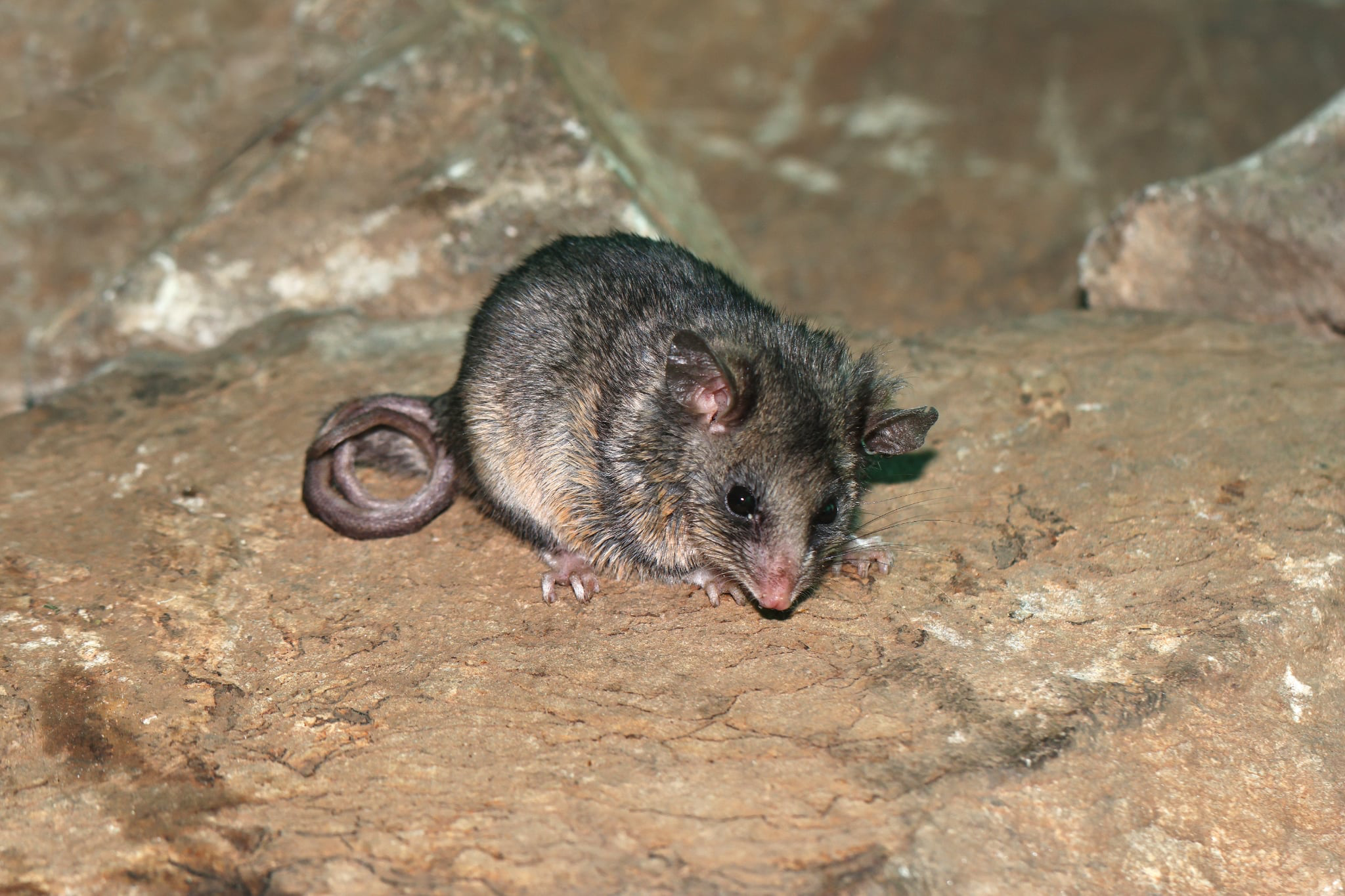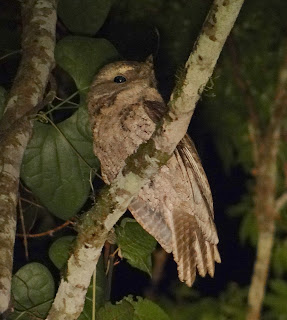
What follows is a transcript of my story in the current edition of The Weekend Australian newspaper. Pic of Mountain Pygmy-Possum by Bernie O’Keefe.
"Four wholemeal crackers, each with a smidgen of peanut butter and a sprinkling of crushed hazelnuts. The crackers were positioned among boulders adjoining Charlotte Pass Ski Resort in Kosciuszko National Park, southern NSW. A wildlife enthusiast, I hoped they would attract native rodents that with luck might be photographed.
Instead, I was blind-sided by a law enforcement tsunami. NSW National Parks and Wildlife Service officers in bullet-proof vests and armed police “on the warpath” to arrest me for wildlife trafficking, as the resort manager put it. I was threatened with jail and spied on by the hotel I was evicted from before being thrown out of the national park under police escort. All this and more - for trying (unsuccessfully) to spot a rat.
Meanwhile, critics say developments associated with ski resorts - along with the controversial Snowy 2.0 Hydro scheme - have had grave consequences for those rats and other wildlife, and the fragile alpine environment more generally in the state's premier national park, with more threats looming.
The primary reason for a planned five-day visit in March to Charlotte Pass was to see rare animals that make their home in boulder fields below Australia's highest mountain, among them the elusive broad-toothed rat and the critically endangered mountain pygmy possum.
 |
| Charlotte Pass Resort |
Soon after I arrived at Charlotte Pass, police and NPWS personnel turned up in separate vehicles at the resort's Stillwill Hotel, where I was staying. The hotel had reported to them that I was seen with an Elliot trap. These box traps are harmless devices used to catch small animals - mainly for wildlife surveys - which are then released. I had set a trap by a resort road but caught nothing. My vehicle was searched and I was interrogated aggressively in view of startled hotel guests.
NPWS thought about this overnight. Officers returned the next morning wearing bullet-proof vests and recording equipment, telling hotel staff I faced 10 years jail for wildlife trafficking. I was out hiking at the time and they left after several hours. Later that day, not knowing I was under surveillance, I walked a short distance from the hotel to the boulder field. Hotel staff reported to NPWS that I was “carrying a blanket and bucket” that clearly was an “animal trap”, according to emails seen by Inquirer. There was no “blanket” or trap of any kind; the bucket held crackers and wooden stakes to mark their placement.
NPWS again called in police based 40 kilometres away in the town of Jindabyne. Uniformed officers clamboured over boulders under the guidance of resort manager Lachlan Blyton-Gray in search of the four crackers. I was ordered to leave the park immediately under threat of criminal charges.
My partner, who was entirely innocent of these alleged critter misdeamours, and I were bundled out of our prepaid hotel room two days early. I was fined $1,000 for having a trap and feeding an animal in a national park. No animals were trapped, disturbed, or even seen. I was unaware that feeding animals was an offence; guests at the hotel freely fed ravens and other wildlife outside its restaurant.
I also knew that researchers had left similar food out for animals in the boulder area in the past. I lost another $700 due to seized belongings and forfeited hotel bookings. My vehicle was escorted by police to Jindabyne, where finding accommodation in the failing light in the tourist off-season was challenging.
 |
| Mt Kosciuszko - view from Mt Stillwill, above Charlotte Pass |
Blyton-Gray, chief operating manager of the Blyton Group, the resort's parent company, said NPWS had directed him to inform it of my movements: “NPWS is our landlord and we are obliged to do what they say.” He added: “They were on the warpath. It was full-on with bullet-proof vests and talk about jail. They were convinced this was trafficking.”
A cursory Google search by NPWS would have revealed my close association with wildlife research and conservation spanning half a century, along with my employment over several decades as a senior journalist with this masthead and other respected media outlets - an unlikely candidate for wildlife trafficker.
NSW Environment Minister Penny Sharpe, who has oversight of NPWS, defended the agency and resort in a statement: “NPWS encourages all members of the community including ski resort operators to report suspected illegal activity in the park... NPWS responded to reports you were attempting to trap and otherwise interfere with threatened species in the park without authority. Under the circumstances staff acted appropriately and professionally at all times.”
Just 400 metres from the cracker implosion, large-scale earthworks were underway by the resort to reshape ski lift operations in preparation for the winter snow season. The lifts run directly over the largest remaining population of mountain pygmy possum in NSW. The ski base adjoins boulders the animals rely on for protection against introduced predators and to seek shelter under the winter snow; the possum is the only marsupial that hibernates. Other endangered species take refuge in the boulders.
 |
| Lachlan Blyton-Gray |
A dozen work vehicles were parked over boulder crevices and on sensitive alpine heath vegetation. A bulldozer went to work as a deafening din from earthworks resounded all day through the boulder field. The works were approved by NPWS, like many other resort developments in the national park, where visitors in the ski season provide substantial revenue to the agency.
The federal Environment Department says habitat loss and fragmentation in boulder fields is a key threat to the survival of the pygmy possum, which is confined to a handful of sites above the snowline in NSW and Victoria. Studies by Victorian scientists revealed 80 per cent of possum habitat was disturbed or removed by skifield developments over 22 years at Mt Buller in the Victorian Alps, although some areas are being rehabilitated.
University of Melbourne genetics expert Professor Ary Hoffmann said possum numbers crashed as a consequence of resort-connected development, with research pinpointing a huge drop in the genetic diversity of survivors. Hoffmann tells Inquirer: “It was a collapse, the most rapid loss of genetic diversity that has been documented ever in a mammal. The boulder fields favoured by resorts for ski runs are critical habitat.”
Presently in winter, a heavy grooming machine at Charlotte Pass flattens snow slopes for skiers over the boulder field. .Blyton-Gray said when works are completed, new ski lifts will be less threatening to wildlife. Special conditions will minimise environmental impacts: “There is a chairlift so we no longer need to run a grooming machine over the boulders. We've planned in great detail over the last five years for this.”
 |
| Boulders below Mt Kosciuszko |
Charlotte Pass Snow Resort was fined $250,000 in 2022 when the NSW Land and Environment Court found it failed to maintain its sewage treatment plant properly, leading to 12 million litres of partially-treated sewage leaking into alpine streams. The court concluded the pollution was avoidable: “Charlotte Pass had actual knowledge that the plant's diffusers needed to be prepared.” Blyton-Gray said the leakage was a result of “mechanical failure”, adding: “We have a new plant. We don't envisage further issues.”
Critics of the $12 billion Snowy Hydro 2.0, approved by the NSW and federal governments in 2020, say the nation's biggest infrastructure projects is having serious impacts on the national park, with state agencies rubber-stamping developments inside its boundaries for one of the world's biggest pump storage projects.
According to the NSW National Parks Association, these consequences include 14 million cubic metres of excavated spoil containing asbestos and acid being dumped in the national park. Major infrastructure - including the widening and construction of more than 100 kilometres of roads and tracks - is planned for the park, destroying sensitive areas. The project requires a massive, 27-kilometre long water tunnel along with 10 kilometres of access tunnels. This will depress the natural water table, further impacting vulnerable habitats, the NPA says in a critique of the project on its website.
A NPA report last year highlighted 18 incidents of non-compliance with government regulations in the park detected in two independent environmental audits required under NSW planning laws. The Environment Protection Agency issued 10 compliance actions against Snowy 2.0 between May 2022 and January 2024. Snowy 2.0 was fined $15,000 on three occasions for discharging polluted water in park waterways.
 |
| Snowy Hydro |
For the benefit of Snowy 2.0, the NSW government scrubbed a requirement in the park's management plan requiring transmission lines to be underground. Australian National University environment professor Jamie Pittock said allowing side-by-side high voltage transmission lines to pass through the park with 70-metre towers and a 140-metre wide easement was a “terrible move” that would disturb a large area in the national park unnecessarily, when underground lines could be used at an affordable higher cost.
 |
| Trail bikes above Thredbo |
Pittock supports Snowy 2.0 but said it should proceed without causing the environmental damage underway or planned in the national park. Asbestos should not be allowed to “fly around all over the place” from spoil excavated for tunnels. A “notoriously potent” fish viral disease in lower storages would be pumped to a higher reservoir, from where it would flow into alpine waterways, threatening endangered fish.
Snowy 2.0 is the first time major infrastructure has proceeded at the expense of threatened habitat in a national park in Australia. Pittock said ever-expanding activities at ski resorts, such as promoting trail-biking riding and other activities during summer, are adding to pressure on the park: “It's the death of a thousand cuts as decade after decade, more of the park is lost to resorts.” Trail bike runs above Thredbo in the park criss-cross broad-toothed rat habitat.
.jpg) |
| Little Ravens are fed at Charlotte Pass Resort |
NPA and other critics question whether Snowy 2.0 has the capabilities to play a meaningful role in the transition to renewable energy due to its considerable distance from major population centres and powering generators. Snowy 2.0 says the project will provide 2,200 megawatts of on-demand dispatchable energy, with enough storage to power three million homes for a week.
While declining to respond to specific environmental criticisms, Snowy 2.0 chief executive officer Dennis Barnes said: “We have many initiatives in place to mitigate and improve the park’s natural environment, which are proof points to us taking our obligation to protect the environment very seriously. Appropriately, our activities in the park are subject to strong regulatory requirements, including a high level of scrutiny and accountability. As part of our commitment, Snowy 2.0 is contributing $100 million to improve the biodiversity and recreation values of the park.”
National parks are intended to be forever: iron-clad legislative protections for wildlife and habitat. Development pressures in the 690,000-hectare Kosciuszko National Park come on top of climate change, which is forcing alpine wildlife into ever higher refuges. Habitat is shrinking due to warmer temperatures and food sources for endangered mammals, like the once abundant bogong moth, are decimated. Four crackers to spot a rat? Not so much of a worry perhaps.”
 |
| Snow Gum at Charlotte Pass |
























.jpg)






.jpg)


%20antechinus.jpg)










.jpg)









